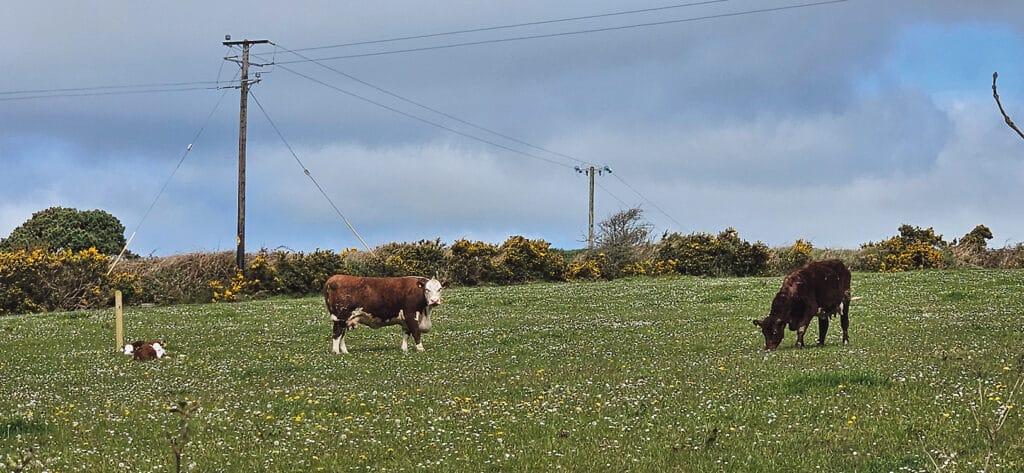
One step forward, any number of steps back, would be a good description of the farming year to date. Bad weather has been the main driver of the difficulties created at farm level as we experienced rainfall in excess of the Long-Term Average (LTA) annual rainfall for the region in 10 months.
The week of and after Storm Kathleen was a good summation of what the last nine months have felt like. Despite concern about it, the storm and the day after brought more wind than rain and did a lot of good drying out ground. That was a nice win. Waking up to pounding rain that kept going for most of that Monday was a bitter pill for many farmers. The sun made a brief appearance on Tuesday but from Wednesday through to early Saturday morning, the locality here was shrouded in fog, mist and rain. Visibility was poor and those few days were tough going.
Thankfully by the start of the third week of April, conditions improved somewhat but the knock-on effects of the last few months will take a while to work though.
It’s hard to believe it’s May. Save for the clocks changing it felt like November never left us.
While there might be a bit more happening in fields and less in yards, we’re not fully out of the woods yet. It was the second half of May in 2013 and 2018 when there were fodder shortages before weather normalised. Hopefully that won’t be the case this year.
Controlled improvisation has been the order of the day on farm. Plans were made on a day by day or week by week basis depending on the farms ground conditions, fodder supply and slurry storage. As tiring as spring 2023 was in yards, 2024s variant has been even harder.
Its impact can be seen in production levels too. To the end of March, milk yields were back anywhere from three to nine per cent on the corresponding time last year. Weather has been the big impact on that and for a number of reasons. Bad weather last spring saw a big number of farmers delay breeding slightly: This, coupled with poor conception rates as weather was unsettled in early May, meant that cows calved later. This was very evident at calf marts throughout the country. Many of them reported that numbers were running up to two weeks behind where they usually would have been. That played out right through March and into the April sales with the peak number of calf sales coming much later. Prices for calves have been running along similar lines to most years but what has been noticeable is a higher proportion of calves from beef sires selling for lower prices than most people were accustomed to.
Despite the weather, trade in marts for older cattle has been holding very well and that has been to the relief of many livestock farmers.
That rain has had an impact right across the sector. As difficult as it has been for livestock farmers, anyone looking to get grain crops or vegetables into the ground has had it even tougher. They got little to no chance to get in to do field work in the first 15 weeks of the year. How that plays out over the remainder of the year will be worth watching. With planting delays for veg in particular, there could be a rise in prices as yields will be back. There are similar concerns with grain and possibly even more with straw. Last year’s difficult harvest made straw a valuable commodity this past winter and with more of it needed for bedding as the spring went on it could be in short supply if the summer doesn’t play ball. Fortunately, the weather picked up towards the end of the month and fields became a hive of activity as more livestock got out and farmers and contractors were finally able to make a start at field work. There was even some silage cut.
It’s going to be a while longer before farmers can relax a bit in 2024.
At home, aside from those that got out in March, it wasn’t until the third week of April before any extra cows and calves got out to grass over the last month. That’s never happened before, as usually they would be going out as soon as conditions allowed, but this year was a balancing act.
A bunch of first-calvers and their calves were out for a fortnight but had to be housed before St Patrick’s day. Heading into the last week of April, they were still inside. They’ll be kept there until grass builds up a little bit more.
The reason they came in, is that I didn’t want to put too much pressure on the shed and end up with a pneumonia or scour outbreak. The heifers stayed in and older cows were put out until I had two manageable groups on the home farm and they have been on a circuit around the paddocks at home just to keep ticking over before they go to the out-farm.
Last year it was the last days of March when we got cattle to Ballinascarthy, this year it’s almost a whole month later. As busy as the spring was, it’s amazing how it can all come to a stop so fast too. A few dry days meant that the sheds could finally be emptied and yard work wound down for a bit. It’s a refreshing change.



